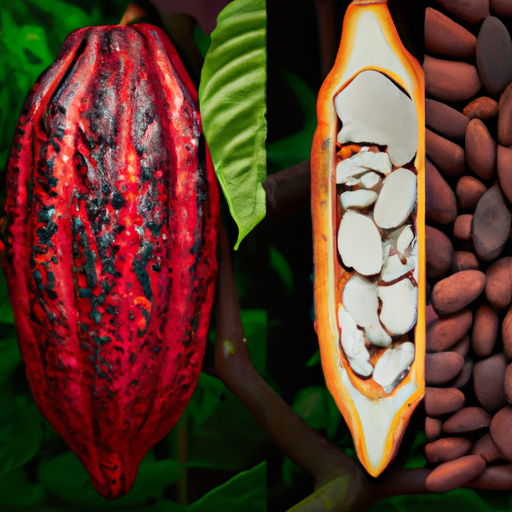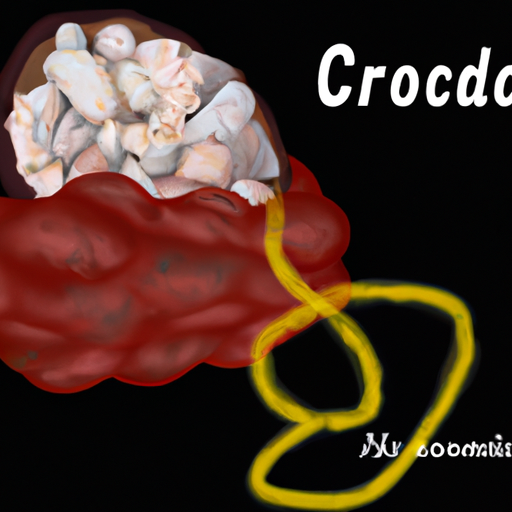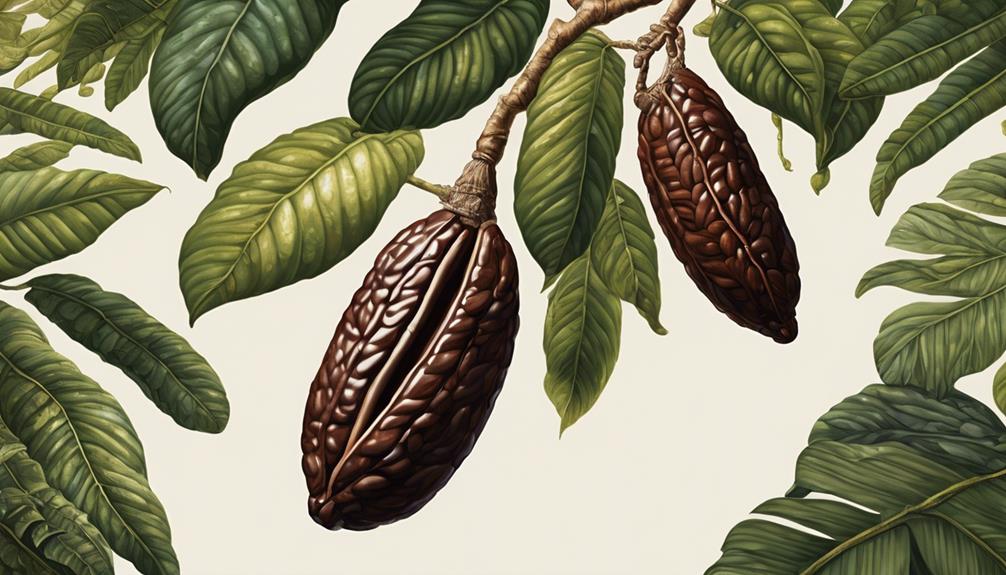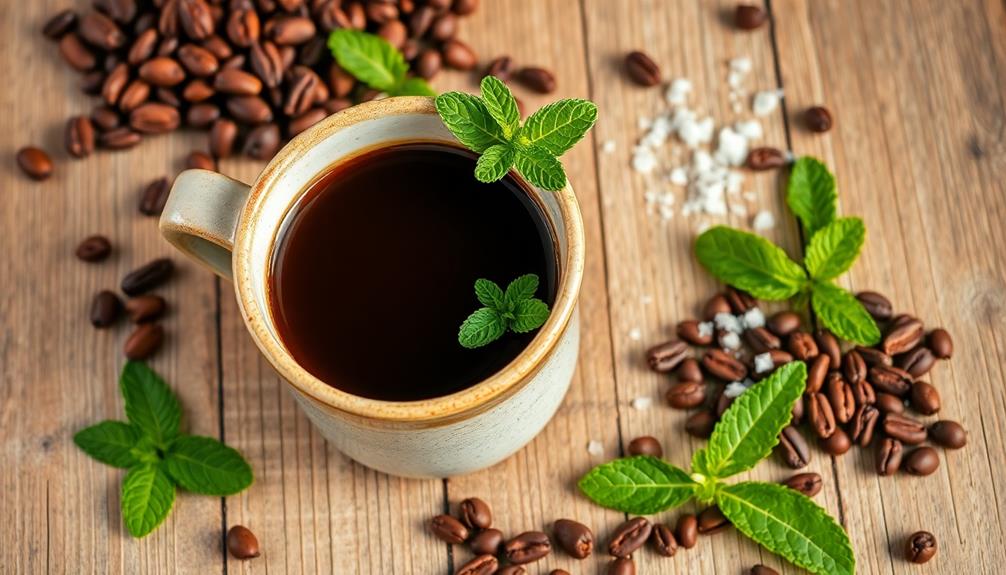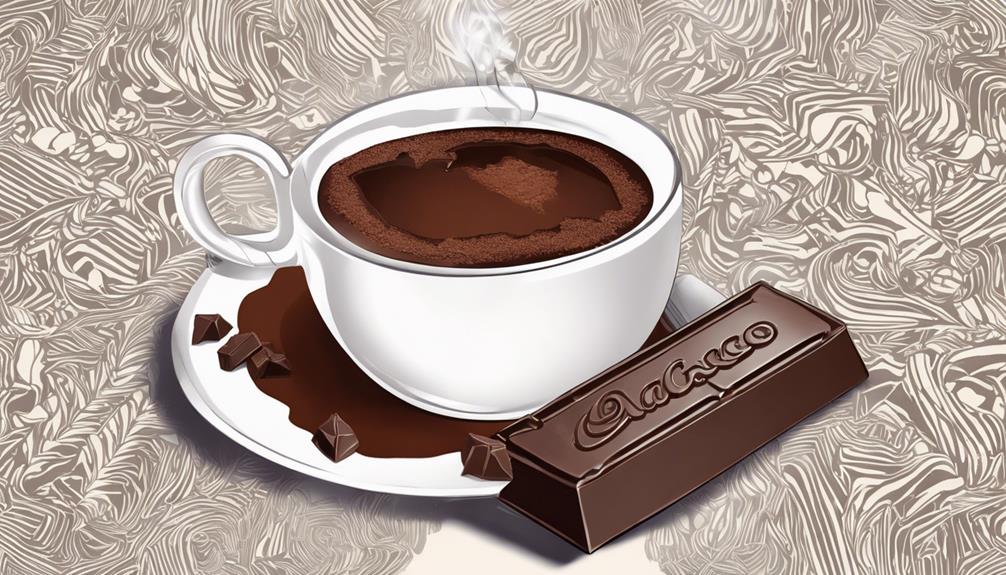Picture indulging in a smooth piece of chocolate, relishing the decadent flavors that tantalize your palate. Now, envision that identical experience, but with a unique element – a richer, more profound taste that transports you through the history of the cacao bean.
Welcome to the world of raw cacao and dark chocolate. In this article, we will explore the differences between these two delectable treats, from their origins to their nutritional profiles, processing methods, and even their health benefits.
So grab a seat and get ready to indulge in the fascinating world of raw cacao and dark chocolate. Whether you’re a chocolate connoisseur or simply curious about the science behind your favorite treat, this article will provide you with all the information you need to make informed choices and enhance your culinary adventures.
Key Takeaways
- Raw cacao improves insulin sensitivity and regulates blood sugar levels.
- Raw cacao contains higher levels of theobromine compared to dark chocolate.
- Raw cacao is more expensive than dark chocolate.
- Personal taste preferences guide the choice between raw cacao and dark chocolate.
Origins of Raw Cacao and Dark Chocolate
Do you know where the delectable origins of raw cacao and dark chocolate lie?
Raw cacao comes from the Theobroma cacao tree, which is native to Central and South America. The production of raw cacao involves harvesting the tree’s fruit, known as cacao pods, and extracting the beans from inside. These beans are then fermented, dried, and lightly roasted to preserve their natural flavors and nutrients.
On the other hand, dark chocolate is produced by mixing raw cacao with sugar, cocoa butter, and sometimes milk or other ingredients. The mixture is then ground and refined to create a smooth texture. The resulting dark chocolate may vary in its percentage of cacao content, with higher percentages indicating a more intense and bitter flavor.
Transitioning into the next section, the nutritional profile of raw cacao and dark chocolate showcases the benefits they offer.
Nutritional Profile of Raw Cacao and Dark Chocolate
When it comes to the nutritional profile of raw cacao and dark chocolate, there are a few key points to consider.
First, raw cacao is known for its numerous health benefits. It is rich in antioxidants and contains minerals like magnesium and iron.
On the other hand, dark chocolate, which is made from roasted cacao beans, also offers some important nutrients. It contains fiber, iron, and magnesium.
Overall, both raw cacao and dark chocolate can provide valuable nutrients that contribute to a healthy diet.
Health benefits of raw cacao
One of the key advantages of raw cacao is that it contains higher levels of antioxidants compared to dark chocolate. Antioxidants are compounds that help protect our cells from damage caused by free radicals.
Here are three health benefits of raw cacao:
-
Improved cardiovascular health: Raw cacao has been found to support heart health by reducing inflammation and improving blood flow. It may also help lower blood pressure and reduce the risk of heart disease.
-
Enhanced mood and brain function: Raw cacao contains a compound called phenylethylamine, which can enhance mood and increase feelings of happiness. It also contains flavonoids that may improve cognitive function and protect against age-related cognitive decline.
-
Rich in nutrients: Raw cacao is a good source of essential minerals like magnesium, iron, and zinc. It also provides fiber and protein, making it a nutritious addition to your diet.
Moving on to the nutrient content of dark chocolate…
Nutrient content of dark chocolate
Indulging in dark chocolate can provide you with a rich array of essential nutrients that are beneficial for your overall health. Dark chocolate is packed with minerals such as iron, magnesium, copper, and manganese, which are important for various bodily functions.
It also contains fiber, which aids in digestion and helps to maintain a healthy weight. In addition, dark chocolate is a great source of antioxidants, which can help protect your body against damage from harmful free radicals. These antioxidants have been linked to numerous health benefits, including a reduced risk of heart disease.
So, not only is dark chocolate a delicious treat for chocolate desserts, but it also offers significant health benefits. Transitioning into the subsequent section about ‘processing methods,’ it is important to understand how these nutrients are preserved during the production of dark chocolate.
Processing Methods
The transformation from raw cacao to dark chocolate is akin to an alchemical process, where the bitter seeds morph into a velvety delight. This transformation involves several processing methods that impact the final product’s taste, texture, and nutrient content. Different types of dark chocolate are produced through variations in the processing steps, such as roasting, grinding, and conching. Roasting helps develop the chocolate flavor by reducing bitterness and enhancing aroma. Grinding breaks down the roasted cacao beans into a fine paste, which is then conched to improve smoothness and texture. The table below summarizes the processing methods and their effects on dark chocolate:
| Processing Method | Effects on Dark Chocolate |
|---|---|
| Roasting | Develops flavor, reduces bitterness, enhances aroma |
| Grinding | Breaks down cacao beans into fine paste |
| Conching | Improves smoothness and texture |
Understanding these processing methods is crucial in appreciating the unique taste and flavor profiles of different types of dark chocolate. Transitioning to the subsequent section about ‘taste and flavor profiles,’ we can explore how these methods influence the sensory experience of consuming dark chocolate.
Taste and Flavor Profiles
Exploring the taste and flavor profiles of dark chocolate reveals the intricate dance of flavors and sensations that arise from the processing methods utilized. The taste preferences for dark chocolate can vary widely, with some people enjoying the intense bitterness and complexity, while others find it too overpowering.
The flavor profiles of dark chocolate can range from fruity and acidic to nutty and earthy, depending on factors such as the origin of the cacao beans and the roasting process. The percentage of cacao also plays a significant role in the flavor, with higher percentages often resulting in a more intense and bitter taste.
These flavor profiles make dark chocolate a versatile ingredient in culinary uses, adding depth and richness to desserts, sauces, and beverages.
Transitioning to the next section, the culinary uses of dark chocolate offer endless possibilities for indulgence and creativity.
Culinary Uses
With its velvety texture and rich notes, dark chocolate becomes a decadent secret ingredient that elevates any dessert to a new level of bliss. Its intense flavor profile pairs well with a variety of ingredients, making it a versatile ingredient in the culinary world. Dark chocolate can be used in both sweet and savory dishes, adding depth and complexity to recipes. Its bitterness can balance out the sweetness in desserts like brownies or cookies, while also complementing flavors like coffee, nuts, or fruits. In savory dishes, dark chocolate can be incorporated into sauces or marinades, adding a unique richness. When it comes to culinary pairings, the possibilities are endless. Dark chocolate truly is a chef’s best friend. Transitioning into the next section about health benefits, it’s important to note that dark chocolate offers more than just a delicious taste experience.
Health Benefits
When it comes to health benefits, raw cacao takes the lead over dark chocolate. Raw cacao is a powerhouse of nutrients, packed with antioxidants, minerals, and phytochemicals that promote overall well-being. Consuming raw cacao has been linked to numerous cognitive benefits, such as improved memory and focus, thanks to its high content of flavanols.
Additionally, raw cacao can have positive effects on cardiovascular health, as it helps lower blood pressure and improve blood flow.
To further delve into the health benefits of raw cacao, here are five key points:
- Raw cacao is rich in polyphenols, which have been shown to protect against chronic diseases.
- It contains a compound called theobromine, which has a stimulating effect on the central nervous system.
- Raw cacao can enhance mood and reduce symptoms of depression and anxiety.
- Its high magnesium content contributes to muscle and nerve function.
- Consuming raw cacao can improve insulin sensitivity and regulate blood sugar levels.
Now, let’s explore the caffeine and theobromine content in raw cacao and dark chocolate.
Caffeine and Theobromine Content
Raw cacao and dark chocolate offer a fascinating contrast in terms of their caffeine and theobromine content, revealing the unique properties of these two indulgent treats.
While both raw cacao and dark chocolate contain caffeine and theobromine, the amounts differ significantly. Caffeine is a stimulant that affects the central nervous system, providing a temporary energy boost and increased alertness. Dark chocolate typically contains a small amount of caffeine, ranging from 10-60 milligrams per 100 grams.
On the other hand, theobromine is a mild stimulant that provides a more sustained energy release. Raw cacao has a higher theobromine content, with about 250-500 milligrams per 100 grams. Theobromine has a milder effect on the body compared to caffeine, providing a gentle mood enhancement and promoting relaxation.
These differences in caffeine and theobromine content contribute to the varying effects of raw cacao and dark chocolate on the body.
Moving on to the next section about ‘price and availability’, we can explore how these factors impact the accessibility of these delightful treats.
Price and Availability
One major factor to consider is the price and accessibility of these indulgent treats. When it comes to price comparison, raw cacao tends to be more expensive than dark chocolate. This is mainly due to the fact that raw cacao is less processed and retains more of its natural health benefits.
On the other hand, dark chocolate is more widely available and can be found in various forms, such as bars, chips, and powders, making it easier to incorporate into your diet. When analyzing availability, raw cacao might be harder to find in regular grocery stores, but it can be easily purchased online or at specialty health food stores. Dark chocolate, on the other hand, is readily available in most supermarkets and convenience stores.
Transitioning to the next section, personal preferences and recommendations, it is important to consider these factors alongside individual taste preferences.
Personal Preferences and Recommendations
If you’re a fan of rich, velvety flavors, you’ll likely gravitate towards the decadent allure of dark chocolate. When it comes to personal preferences, taste plays a crucial role in determining which type of chocolate is preferred.
Some people enjoy the intense and slightly bitter taste of raw cacao, which is known for its pure and unprocessed form. On the other hand, dark chocolate offers a well-rounded taste that combines the bitterness of cacao with the sweetness of added sugar.
The varying levels of cacao content in dark chocolate also contribute to different taste preferences. Those who prefer a less intense flavor might opt for dark chocolate with a lower cacao percentage, while others may enjoy the robust taste of a higher cacao content.
Ultimately, personal taste preferences will guide the choice between raw cacao and dark chocolate.
Frequently Asked Questions
Can raw cacao and dark chocolate be used interchangeably in recipes?
Yes, raw cacao and dark chocolate can generally be used interchangeably in recipes. Both provide rich flavor and antioxidants. Raw cacao, however, has more health benefits as it is less processed and retains higher levels of nutrients.
Are there any potential side effects or risks associated with consuming raw cacao or dark chocolate?
Consuming raw cacao or dark chocolate in moderate amounts can offer potential health benefits. However, it’s important to note that excessive consumption may lead to side effects such as digestive issues or weight gain. Recommended serving sizes should be followed.
How does the processing method affect the nutritional value of raw cacao and dark chocolate?
The effect of roasting on the nutritional value of raw cacao and dark chocolate is significant. Roasting reduces antioxidant content and destroys some beneficial compounds, resulting in a decrease in overall nutritional value when compared to raw cacao.
Can raw cacao and dark chocolate be enjoyed by individuals with dietary restrictions, such as those following a vegan or gluten-free diet?
Individuals with dietary restrictions, such as vegans or those on a gluten-free diet, can enjoy raw cacao and dark chocolate. There are vegan chocolate options available and alternatives for gluten-free chocolate.
Is there a significant difference in the caffeine and theobromine content between raw cacao and dark chocolate?
There is a significant difference in the caffeine and theobromine content between raw cacao and dark chocolate. Raw cacao generally has higher levels of both caffeine and theobromine compared to dark chocolate.
Is the Smell of Raw Cacao Nibs Similar to Dark Chocolate?
Yes, the smell of raw cacao nibs is similar to dark chocolate. Both have a rich, intense aroma with hints of earthiness and fruitiness. The raw cacao nibs offer a slightly more complex scent due to their unprocessed nature, but the overall chocolatey fragrance is unmistakable.
Conclusion
In conclusion, while raw cacao and dark chocolate may seem similar, they have distinct differences.
Raw cacao is the unprocessed form of the cacao bean, and it maintains its natural nutrients and antioxidants.
On the other hand, dark chocolate undergoes processing, which may reduce some of its health benefits. However, it still contains a significant amount of antioxidants and can be a delicious and nutritious treat when consumed in moderation.
So, for those seeking maximum nutritional value, raw cacao is the way to go. But for those looking for a tasty indulgence, dark chocolate is a great option.

